I Tech Life is a test and information site, our mission? Help you find the device that best fits your needs, your needs.
Don't wanna be here? Send us removal request.
Photo
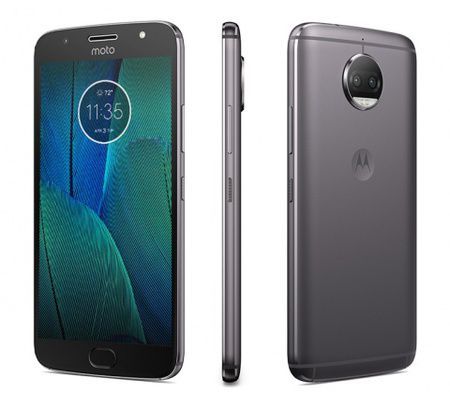
STRONG POINTS Very solid autonomy Quality construction. Screen pretty well calibrated. Balanced performance.TEST / Motorola Moto G5S Plus.
Just eight months after releasing its Moto G5 and G5 Plus, Motorola is already slightly renewing its G5S and G5S Plus. A small upgrade for a family of products that was once rhymed with cheap smartphones.
CHARACTERISTICS
Dimensions 153.5 x 76.2 x 8 mm Weight 168 g Diagonal screen 5.5 inches Screen definition 1920x1080 DPI 401 Screen type IPS Surface screen share 71.6% Mobile chip Qualcomm Snapdragon 625 Processor ARM Cortex-A53 - 2 GHz Number of hearts 8 Integrated GPU (iGPU) Adreno 506 RAM memory 4GB Internal memory 32GB Memory card Yes Battery capacity 3000 mAh Photo sensor 13 MP Front photo sensor 8 MP Video capture 4K Operating System (OS) Android OS version tested Android 7.1 Nougat Connectors Micro USB Fingerprint sensor Yes Wi-Fi type 802.11a / b / g / n Bluetooth type 4.1 NFC no 4G (LTE) Yes Dual-sim Yes SIM card format nano Exposure level (DAS) 0.91 W / Kg Seal type no Gyroscope Yes Removable battery no
This phone offers a screen 5.5 inches (14 cm) Full HD, a chip Snapdragon 625, 3 GB of RAM and 32 GB of storage (with possibility of adding a microSD card), a battery of 3000 mAh, a double photo module on the back with two 13 megapixel sensors, one 8 megapixel on the front, a fingerprint reader, a micro-USB port on the edge and the traditional suite of wireless connectivity: 4G (all bands), Bluetooth 4.2 , GPS, NFC and FM Radio. All this beautiful world is powered by Android 7.1.1 at the time of writing this test, but Lenovo has promised to deploy Oreo on the mobile.
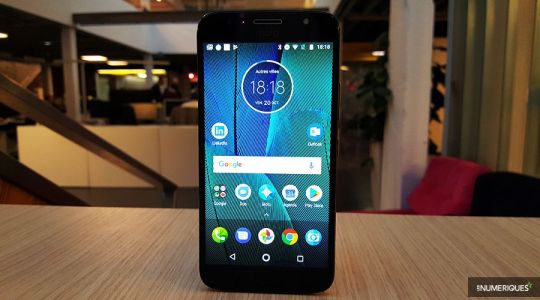
ERGONOMICS AND DESIGN 3/5 It is no longer very surprising to see a well-finished smartphone around 300 € today, but it is always good to underline it when it happens, and on this G5S Plus, it is the case. The all-in-one design and the high-quality aluminum hull give a good impression of seriousness, and the minimalist design will not shock. The only real highlight is the impressive protrusion of the camera, which certainly gives a style, but does not allow the mobile to hold perfectly flat on a table.
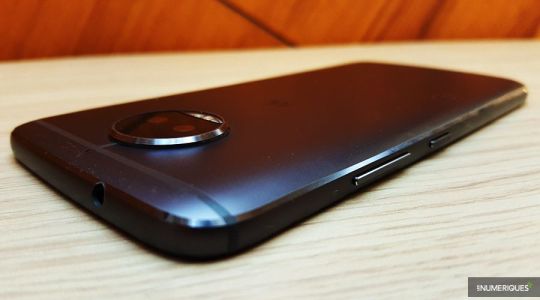
It is also regrettable that Motorola has not seen fit to make its mobile waterproof, while this feature is spreading rapidly, or to provide a screen in the format 18: 9 and "edge to edge", two current trends that the manufacturer did not wish to follow either. The 5.5-inch format with 71.3% screen occupancy rate therefore prohibits one-handed use.
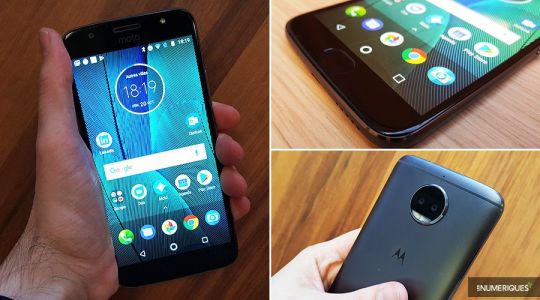
Apart from that, there is not much to say about the general design of the smartphone which, if it is not more inspired, remains at least effective and unfussy. The fingerprint reader is not the fastest on the market, but will do the trick. We also appreciate the possibility offered via the Moto app to use this player as a navigation button, instead of virtual buttons.
SCREEN 4/5 After a Moto G5 Plus that was getting lost in the jungle of color, Motorola has made efforts on its new model and has applied to deliver a slab much more in line with the expectations of the end of 2017. Colorimetric side, the G5S Plus is doing moderately well with a delta E at 4.1 and a color temperature around 7,418 K. Not enough to traumatize the eyes of purists, but there is still a slight drift.
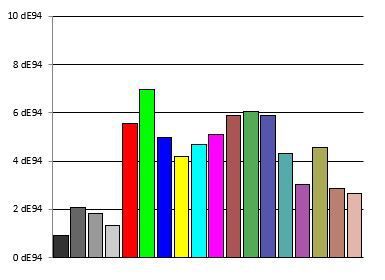
Fortunately, the mobile is catching a little on the front of readability, with a good contrast ratio of 1 478: 1 and a maximum brightness of 500 cd / m² (minimum 5.9). What to ensure good reading comfort in most situations, especially with a reflectance rate of 13% the mobile will defend itself even outdoors in full sun. In use, the 108 ms delay time and remanence should be adequate. And the Full HD definition on a 5.5 inch screen is enough for 98% of uses. In short, without being flawless, the screen of G5S Plus should not pose too many problems.
By adopting a Snapdragon 625 chip, Motorola is playing security. It is a chip that the manufacturer knows well, to have integrated one of its variants in the Z2 Play, and one of the most mature mobile platforms catalog Qualcomm. No surprise then: the phone turns like a clock with the pure Android interface that reacts to the finger and the eye. RAS on this side. Same observation on the heating side; there is no disturbing behavior in normal use and the maximum temperature never exceeds 35 ° C. Nothing alarming, therefore. The only moment when the mobile undergoes small rises in temperature is during the fast charge, during which temperatures of around 40 ° C were recorded. But the mobile cool down quickly once the cable removed.
AUDIO 4/5 The headphone output of the G5S Plus does not rank among the best, but still far enough. The power could have been more generous but remains correct, and the distortion is kept at a very low level. The dynamics is broad and the crosstalk rather well marked. In short, we inherit a rather clean sound scene, which perhaps lacks just a little punch. As for the only speaker located on the lower edge of the mobile, it does a good job and offers a more complete than the one we would expect. Just note there is a slight distortion.
PHOTO 3/5 First Moto phone equipped with a double photo sensor to pass in our labs, this G5S Plus intrigued us. Not that the presence of a dual sensor is surprising in itself, but all manufacturers having a different way of exploiting it, we were curious to know what gave the approach of Motorola. Let's say it straight away: as often, we have not been completely convinced. The two 13 megapixel sensors do not offer top-level rendering. In broad daylight even if the details are quite present, the dive lacks a little call. Result, the elements do not really stand out, especially on the edges where a slight blur is installed. However, the scene stands relatively well with a reproduction of clean colors and a balanced white balance.
AUTONOMY 5/5 It's almost a habit at Motorola: the G5S Plus has pleasantly surprised us with its high endurance. Like its little brother the G5 Plus, thanks to a mid-range chip and a battery of good capacity, the mobile rises a little above the fray. On our SmartViser mixed-battery test, the G5S Plus takes 16 hours and 40 minutes, which is 1 minute longer than its cousin, the Z2 Play, which was already doing very well.
STRONG POINTS Very solid autonomy Quality construction. Screen pretty well calibrated. Balanced performance. WEAK POINTS Photo capabilities below the competition. Double photo sensor that does not bring much. No sealing or "borderless" screen. Imposing photo protuberance.
0 notes
Photo
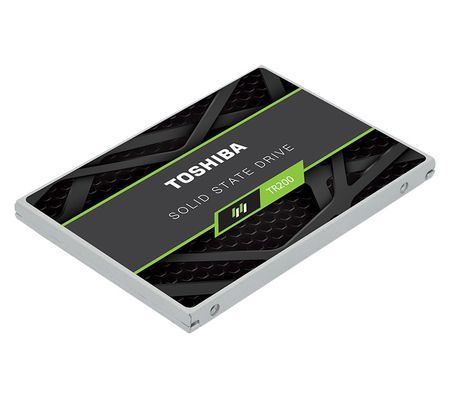
With its TR200 series, Toshiba finally released its 3D TLC memory through this SSD whose stated goal is to position itself skilfully on the sector of the entry level. The TR200 also aims to integrate OCZ's know-how into Toshiba's overall strategy. No doubt a polite way to say that, little by little, the OCZ brand will disappear in favor of Toshiba.
CHARACTERISTICS Capacity 480 GB Hidden Reading 550 MB / s Writing 540 MB / s Random 4K Playback 82000 IOPS Random 4K writing 88000 IOPS
With its TR200 series, Toshiba continues the integration or rather the absorption of OCZ - a maneuver started four years ago now. Firstly, if the TR200 nomenclature irrevocably thinks of OCZ (the TRs are historically the OCZ Trion), the mark does not appear on the SSD itself, either on the metal shell or the printed circuit board. . The only mention is on the package, where OCZ appears before the name TR200. It would not be surprising if the OCZ brand disappears completely in the months to come, Toshiba has probably managed to catch up with the deficit of OCZ in branding. The Japanese manufacturer also indicates that the TR200 series includes both the rest of the previous OCZ TR series and Toshiba Q300 series, which will not be renewed as such. Conscious of offering an entry-level product, the manufacturer defends itself - if need be - arguing that from now on there is little point in offering high-end 2.5 "SATA SSDs when M.2 NVMe offer speeds of several gigabytes per second, and we strongly agree with this analysis, especially since the interest of more or less high bit rates in SATA remains to be demonstrated for domestic use, including for games, but it's only good when you do not go down to a critical level.
NAND 3D TLC memory, but no cache The most interesting however is the use of NAND 3D BiCS memory, from Toshiba Memory factories: a first for the brand, but not on the market. Indeed, WD took advantage of the purchase of SanDisk to release the Blue 3D and Ultra 3D that use this type of memory. As a reminder, Toshiba and WD (through the acquisition of SanDisk) had allied themselves on the development of 3D memory, through their joint venture Flash Forward, and on the production of said memory by Toshiba Memory. In order to replenish its coffers, Toshiba nevertheless wishes to sell its shares in this company, which has created a dispute with WD. Anyway, this is the third generation of NAND 3D BiCS, presented in its TLC version. The 8 memory chips present on both sides of the printed circuit store 3 bits of data per cell. These cells are arranged as grids stacked on 64 levels - the fourth generation will bring the stack to 96 levels. In order to reduce production costs, Toshiba decided not to use a cache: an option that offers the controller used, a Toshiba TC58NC1010GSB. It is actually a renowned version of the Phison PS3111-S11, an inexpensive controller developed specifically for SSDs without cache memory and operating on two channels.
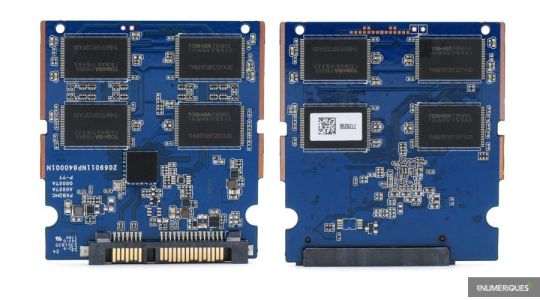
Nothing exceptional on the side of the warranty, which is 3 years as on most SSD input and midrange. The write endurance is 120 TB on this 480 GB version, which is inferior to the competition - the Crucial BX300 480 GB is announced at 160 TB. This is nevertheless correct, because it is still equivalent of 112 GB of daily paperwork over 3 years and another 67 GB over 5 years. So it's high enough for a desktop computer or even for storage for games. TLC memory always rhymes with SLC cache Obviously, that says NAND TLC memory usage, says recourse to an SLC cache system. As a reminder, the problem inherent in the TLC memory is that it requires checking more states (voltages) to know if a cell is blank data or not. This doubling of voltage points to check against the MLC has the perverse effect of increasing access latency, so reduce the write rate, making it fall below 100 MB / s on the worst SSD. The solution found by the SSD constructors is the SLC cache. This is to use some of the memory cells as if they were SLC memory. A single bit of data is then checked and written, reducing access latency and increasing performance. On the Toshiba TR200 480 GB tested here, this cache is about 8 GB according to our findings. Clearly, if you perform for example a 20GB writing job, such as the installation of a video game, only the first 8 gigabytes will be at the accelerated rate; the next 12 will then be at the nominal flow rate, which is lower.
0 notes
Photo

The LaCie d2 storage solution is so reliable, so much in the way of bandwidth-intensive tasks that creative professionals can focus on the essentials: creation. Compatible with Thunderbolt 3 and high-speed technologies. USB 3.1 thanks to its USB-C port, the new LaCie d2 works perfectly on the latest models of laptops or MacBook Pro. It's also the first LaCie product to integrate Seagate® BarraCuda® Pro HDD + Rescue Data Recovery Services
Features: Next-Generation USB 3.0 Interface Aluminum Monocoque Enclosure for Longer Life Innovative Design for Noise and Vibration Reduction
0 notes